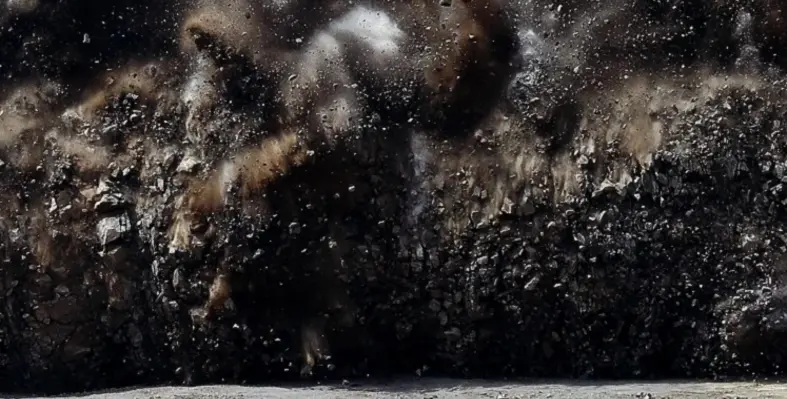BME has helped a South African coal mine that was facing highwall challenges cuts costs while retaining optimal fragmentation through the implementation of a modified pre-split design
According to the bulk mining explosive & blasting technology supplier, the mine had experienced problems with poor blast performance and geological issues at its highwalls.
“Excessive burdens, mechanical over-digging and poor pre-split performance were factors behind the unfavourable high-wall conditions,” commented BME technical services manager Tom Dermody. “Previous attempts to address the issue had added additional face row holes to remove the excessive burden, but this resulted in increased drilling and blasting costs per cubic meter.”
A typical blast size on the mine is 540 holes in each 300 metre blast strip, where the bench depth ranges from 23 to 30 metres. Blasting operations follow a methodology of full chevron and half chevron initiation sequence, with pre-splits executed in advance.
“Our technical services team conducted a thorough study of blasting operations and identified key areas for improvement,” Dermody explained. “We focused on pre-splitting and excessive burden management.”
Pre-splitting to raise performance
Pre-splitting is a technique in mining operations that aims to enhance rock fragmentation and overall blasting efficiency. It involves creating a stable zone along the rock surface before the primary blast, which allows for controlled fracturing and helps to minimise the risk of overbreak. He emphasised that this technique also contributes to maintaining a more uniform material size.
BME senior technician technical engineer Frank Hattingh, continued, “The pre-split design changes that we introduced included adjusting the split factor, changing the pressure curve, and increasing the explosive charge per hole. The split powder factor of the presplit drill holes was increased from 0,3kg/m3 to 0,8 kg/m3, resulting in more favourable presplit outcomes.”
Hattingh further explained that optimised burden relief is crucial for optimal fragmentation during the blasting process. Excessive burdens will produce poor fragmentation, reduced blast movement and damage to high walls.
“In the past, a common method of trying to manage poor fragmentation was to introduce additional drill holes – to increase the powder factor in the front row of holes. On a typical blast, this was an additional 60 holes or 1800 metres of drilling. The modification in the pre-split design allowed the removal of these crest holes, resulting in an 11% reduction in drilling meters per blast,” Hattingh remarked.
BME’s intervention at the mine highlighted the importance of pre-splitting in mines. By creating a stable zone along the rock face before the main blast, pre-splitting allows for controlled fracturing, minimise the risk of overbreak and maintaining a more uniform material size.
“Through this modified pre-split technique, we assisted the mine in achieving more precise control of high wall safety and performance,” concluded Dermody. “The main cost saving was through removing the crest holes, which saved the mine nearly R8 million in drilling, explosives and accessories over a 12 month period and additionally presented a possible >R230million in savings across the customers value chain.”






